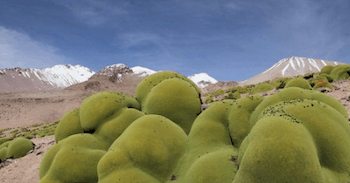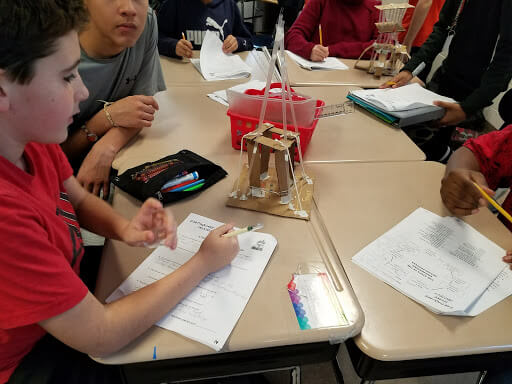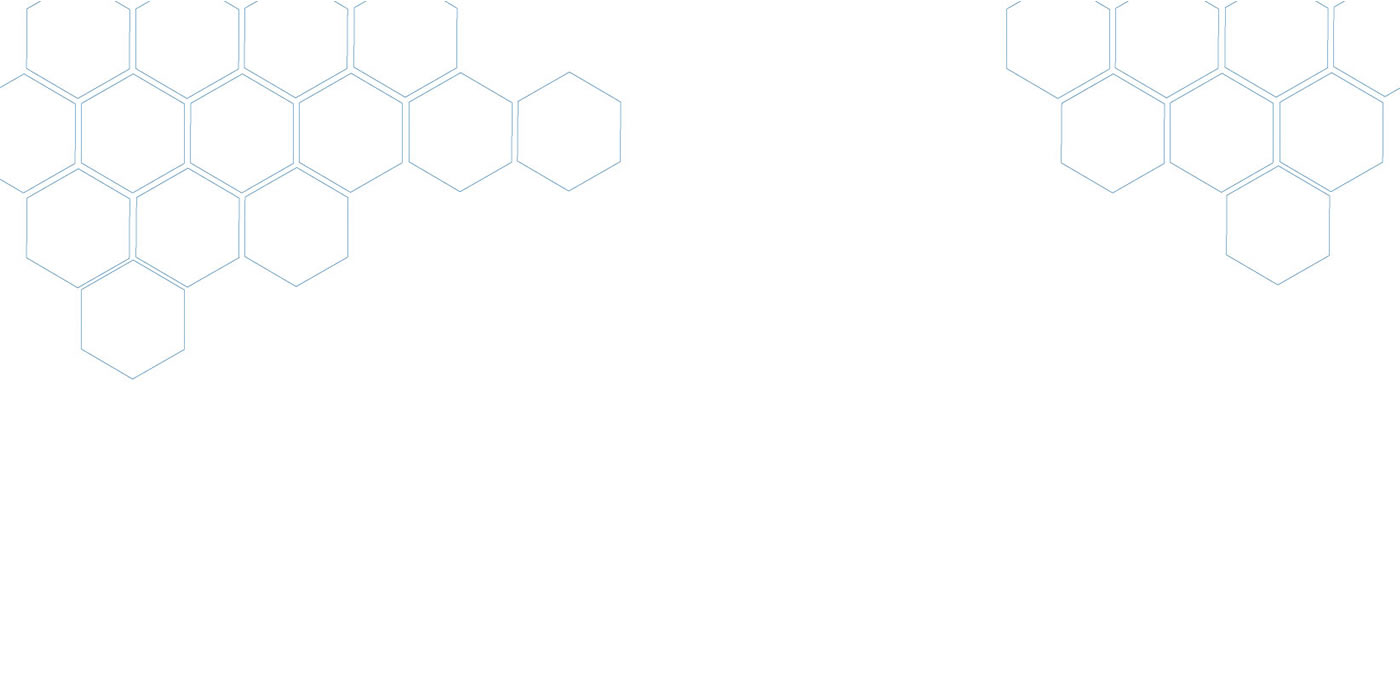Meeting Students Where They Are
Janice Blaine, Trustey Cohort 3 - Fernwood Avenue Middle School in Egg Harbor Township, NJ
As a child, I would often get excited by the wonder of the outdoors–the smell of grass as my father cut the lawn, or the sight of my mother’s ripe, red tomatoes in her garden.
How was it that the leaf-covered lawn suddenly became clean neat and green after dad cut it? Where did the seeds that mom had planted in the garden months before go?
While these memories stem from my own childhood, I now see children learning at a very young age through exploring, making observations, and asking questions about the world around them.
As a sixth-grade teacher of students with disabilities, I incorporate inquiry and interest as links to meaningful STEM education for all students. It is a means to meeting them where they are and encouraging their participation in problem-solving opportunities.
 Inquiry: Is it a Green Rock?
Inquiry: Is it a Green Rock?
Students in my classroom face a wide range of learning challenges. One student in particular is classified as having a Specific Learning Disability (SLD), which in his case makes written communication and problem solving difficult.
One of my goals as a teacher is to ensure that all students are encouraged to participate in a way that challenges their mind to stretch in new ways without being overly frustrating. One way I accomplish this is by using puzzling phenomenon such as these interesting green rocks found high up in the Andes Mountains.
I like incorporating puzzling phenomenon into my classroom because it capitalizes on Vygotzky’s theory of the Zone of Proximal Development. Vygotsky’s work noted differences in what a learner can do without help versus what a learner can do with the help and guidance of a teacher.
In this situation, the student might have a greater chance to master the skill when given an interesting context and supported through teacher questioning. This student originally responded to the image by saying, “No, I don’t agree, it’s not a plant because snow is on the other mountain and stuff can’t grow in snow!”
Together, the class discussed the image, and I grouped ideas on the board. Eventually, we landed on the question, “Can we agree that this is a plant growing on the rock?” which prompted this student to make a connection and modify his opinion based on the discussion. In this instance, the use of inquiry was important to guide the student’s own thinking, providing just enough support for him to develop his own response and offer him justification. Inquiry-based discussion centered on a puzzling science phenomenon help provide a gateway to meet this student where he is on his path.
Interest: Using Student Experience
 Provoking student interest in a topic is also important to help meet students where they are and support their thinking. In earth science we identify causes and effects of shifting plates. I often capitalize on students’ natural curiosity about natural disasters like volcanoes and earthquakes and try to connect with students’ previous experiences with each.
Provoking student interest in a topic is also important to help meet students where they are and support their thinking. In earth science we identify causes and effects of shifting plates. I often capitalize on students’ natural curiosity about natural disasters like volcanoes and earthquakes and try to connect with students’ previous experiences with each.
One student recalled a time they were on an island on the Caribbean Plate where they believed an earthquake occurred. The discussion was a chance for me to get students talking about what people in STEM-related fields, including architects and engineers, might be able to do in order to make buildings safer during future earthquakes.
Instantly and with excited anticipation, my students began asking daily about their participation in the STEM integration project with the other students in the larger class. They were eager to begin designing and building in groups to create earthquake-resistant structure prototypes. Who knew an earthquake could incite such enthusiasm and purpose to accomplish a goal!
STEM for All
My hope for my middle school students is that with early child-like wonder, they develop connections between things familiar and new that will bring interest, engagement, and most importantly, understanding.
This is important in particular for students with disabilities to become participants in STEM education. They need to know that the world of STEM is also their world. In order to achieve active participation in learning, students must develop an interest first. Improved thinking and problem solving can then be supported with guidance by the teacher once interest at their level has been established.
By sparking student interest and regularly incorporating inquiry into the opportunities for my students to think and learn, equity in the classroom and access to each new concept become built in. These structures of support in STEM education help me meet my students with disabilities where they are and support each one on their own path for growth.
Learn more about the Trustey STEM Teaching Fellows and start your application to our next cohort!


